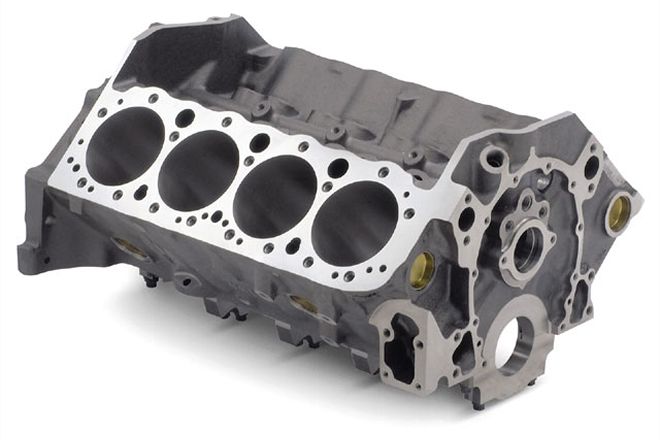
Some of you may remember the Jan. '07 issue, where we began assembling components for a stroked 383 Chevy small-block engine. The idea back then was to build a California smog-legal engine that could produce somewhere in the neighborhood of 500 rear-wheel horsepower on pump gas. Originally, we planned to drop this mill into a blue '92 Chevy 1/2-ton that was first shown in "The Lowdown on Four-Wheel-drive Conversions" (June '05). Unfortunately, in the passing years that particular truck was sold by its owner, Off Road Unlimited, before we had a chance to install and test the new engine. Like so many unfinished projects without a good home, Stover's Stroker was put on the back burner until a suitable donor vehicle was attained. Lo and behold, Four Wheeler's unfinished project SuperBurb popped back up on the radar. We discovered it beneath a thick layer of dust and cobwebs in the side yard of its former owner's parents' place in Malibu, California. Incidentally, the truck was for sale, so quick-thinking Stover purchased it with the intent of bringing it back to these pages. Over the past year and a half, we've received a ton of mail about the disappearance of both Stover's Stroker and the SuperBurb, so we're pleased to reintroduce both projects with an updated build strategy and even greater performance goals. In the coming months, you can expect to see us marry the two buildups, netting a super Suburban like no other.
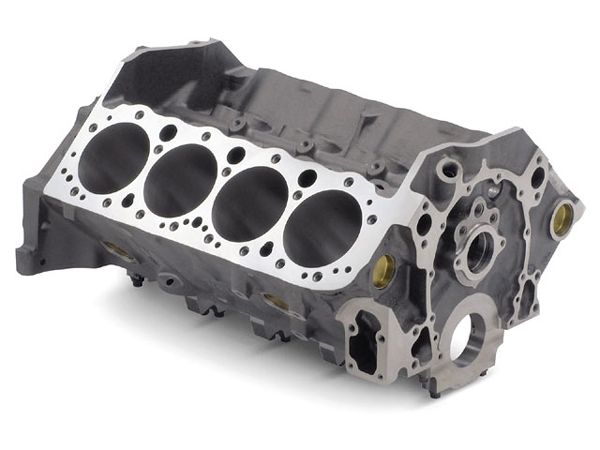 Starting with a GM Performance Parts 350 Bow Tie Sportsman block, we plan to show off a variety of tips and tricks that will net our overall performance goals while at the same time allow a long and healthy engine life.
Starting with a GM Performance Parts 350 Bow Tie Sportsman block, we plan to show off a variety of tips and tricks that will net our overall performance goals while at the same time allow a long and healthy engine life.
New Project Criteria
Stover's Stroker:
1. 6,500-rpm redline
2. Good driveability
3. Nitrous-compatible
4. 500 rear-wheel horsepower, 500-lb-ft of torque
5. Longevity-we want it to last
Project SuperBurb:
1. Overland adventuremobile
2. Plenty of secure storage for equipment and gear
3. Dependable performance for multi-week trips
4. Self-contained camping with sleeping quarters for up to four adults
5. Classic styling with high-tech underpinnings
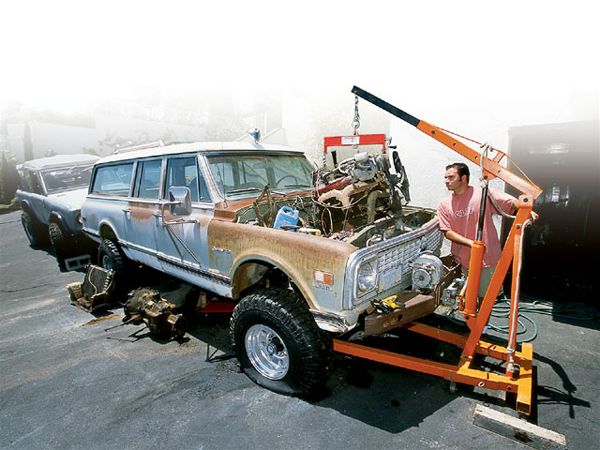
Back in 2004 the SuperBurb received a brand-new 383 HT GM Performance powerplant. That turnkey crate engine is still available today and offers high torque over a very broad and driveable rpm range (2,500 to 4,000). So why are we building a different stroker, you ask? Well, while the 383 HT is quite capable in its own right (340 hp at 4,500 rpm, 435 lb-ft of torque at 4,000 rpm), our sinister plan included 35-inch rubber, a 9,000-pound gross vehicle weight, and the ability to keep up with modern diesel pickups on longer hillclimbs. What can we say, we're power snobs.
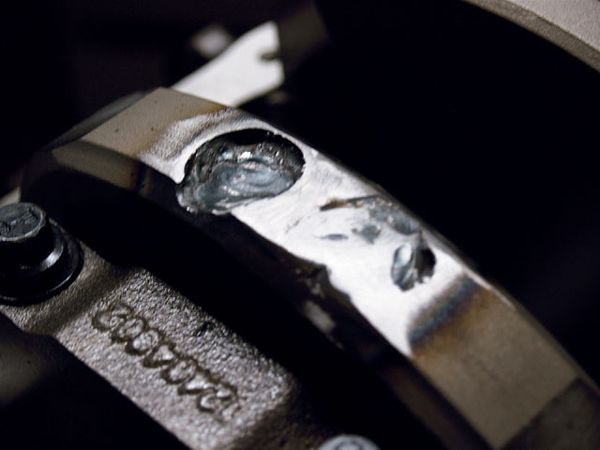
The first step to any good engine buildup is blueprinting and balancing. Blueprinting, by definition, means taking the time to recheck and remachine if necessary, engine components to optimal tolerances to effectively achieve better durability. The balancing aspect requires engine builders to carefully weigh each and every component of the rotational assembly. The idea is to make the crankshaft counterweights equal to the pistons, wristpins, rings, and small end of the connecting rod. Most builders use spin balancers to evaluate rotational forces at a given rpm. Most connecting rods, pistons, and wristpins are all sold as a matched set to make the process easier. Larry Kleen of Mustang Ranch in Santa Clara, California, performed our blueprint and balancing job. This shot shows an area where Kleen added weld to the crankshaft counterweight to achieve proper balance.
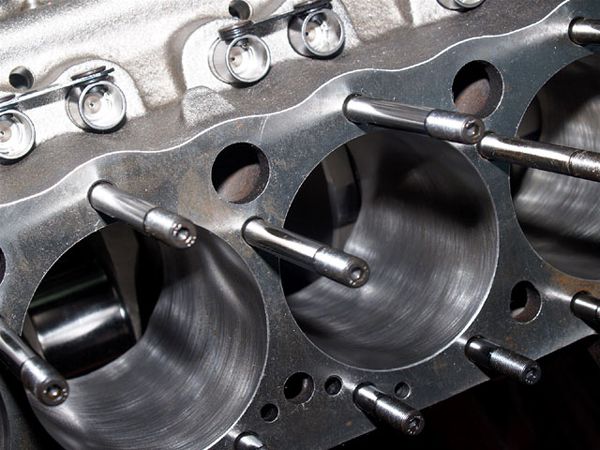
This photo shows the nice cross-hatching Ganz made in the cylinder walls after boring out each cylinder. The cross-hatched pattern is made using a cylinder hone, and its purpose is to help retain oil to allow a faster seat between the piston rings and the cylinder wall as the engine breaks in. Honing is as much an art as it is a skill. Also notice the ARP head studs we secured for the buildup. ARP is the undisputed leader in high-quality fasteners. These studs provide greater clamping force and will not stretch over time like other lesser-grade studs.

We planned to run off-the-shelf products that the average guy can find in the Summit Racing catalog because we hope to inspire readers to build engines on their own instead of spending big bucks on turnkey crate motors. For this reason, we picked a readily available forged 4340 steel crankshaft from Eagle Specialty Products. Sold through Summit Racing, Eagle crankshafts are a great value per dollar for high-performance applications. They feature non-twist forging, go through a multistage heat-treatment process, and are stressrelieved and shot-peened for longevity. Every Eagle crank is also X-rayed, Magnafluxed, and sonic tested, so you know you're getting a top-quality piece. Other noteworthy features include cross-drilled and chamfered oil holes for improved lubrication, a 0.125-inch radius on rod and main journals for increased strength, and the journals themselves are precision-ground and micro-polished and have a target bobweight of +/- 2 percent, which greatly reduces balancing time. Our crank features a 3.75-inch stroke to help achieve our 383ci displacement.
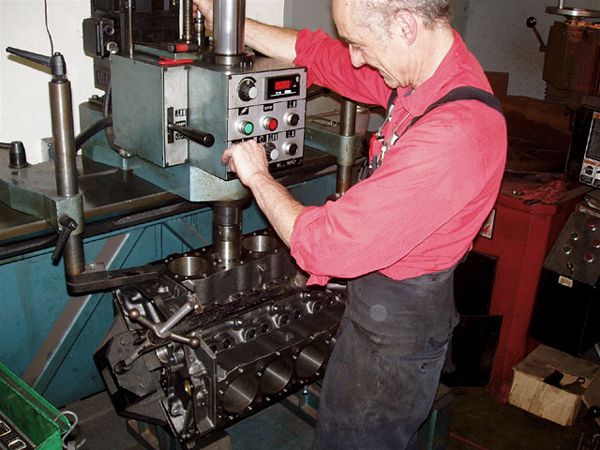 Here you can see our machinist, Joe Ganz of Los Gatos Auto Service in Los Gatos, California, preparing to bore out the cylinders 0.030 inch over on our Sportsman block.
Parts List (this installment) Manley H-Beam rods PN 14050 {{{Eagle}}} crankshaft PN 435337505700 Keith Black pistons PN KB735
Here you can see our machinist, Joe Ganz of Los Gatos Auto Service in Los Gatos, California, preparing to bore out the cylinders 0.030 inch over on our Sportsman block.
Parts List (this installment) Manley H-Beam rods PN 14050 {{{Eagle}}} crankshaft PN 435337505700 Keith Black pistons PN KB735 More To Come
Well, we're out of space, folks. Next time we'll showcase our head selection, cam choice, fuel injection, and a whole assortment of other parts that we're using to make our stroked small-block come to life. Stay tuned. To see Part 1 of "Stover's Stroker," log onto www.fourwheeler.com and check out the "Tech" department.
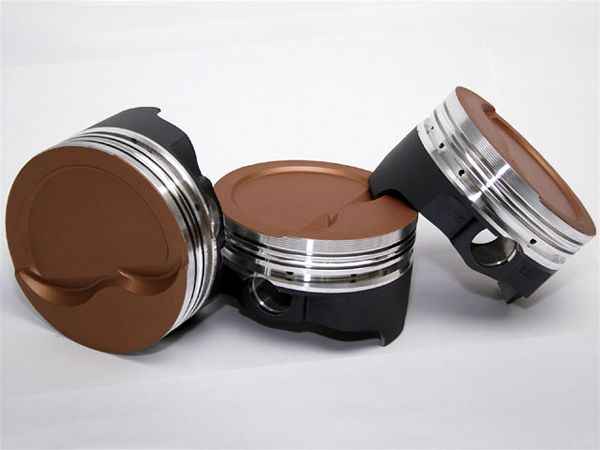
As mentioned earlier, we wanted this engine to last a good long time, so we looked into the idea of having our Keith Black pistons coated with two purposeful coatings for added protection. The first of which is a lubricating Piston Skirt Coating (darker color) intended to reduce friction, as well as inhibit galling and seizing. This coating is applied to the skirt area only. The typical dimensional change is 0.0003 to 0.0005 inch. The second coating is a Thermal Barrier Coating designed to help reflect heat away from the top of the piston and into the combustion chamber, thus increasing exhaust-gas velocity and greatly improving the engine's scavenging potential. Both of these coatings were applied by the coating experts at Embee Performance of Santa Ana, California. These are the same type of coatings racer Robby Gordon uses on his Dakar and Baja race-vehicle engine components. The cost of these coatings was under $300, and the turn-around time was just three short business days.
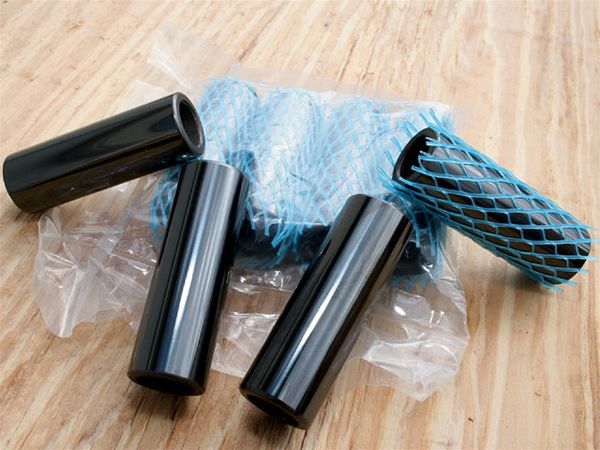
Another trick coating we decided to try on this engine was intended to increase the service life of the wristpins. The coating is called Carbon Raptor by a company known as Extremeion. The diamond-like carbon coating is applied by a Plasma Assisted Chemical Vapor Deposition (PACVD) process to permanently coat the parts' surfaces with a micro-thin carbon film to reduce friction and surface wear. Carbon Raptor is highly flexible, won't break off, and is known to be the highest-hardness and lowest-friction coating available today. Application thickness is typically between 2 and 4 microns (80 to 160 millionths of an inch), so no additional requirements are necessary for component fitment. The cost for this coating was $42.00 per wristpin, not exactly cheap, but a cost we expect will pay off in the long run. We think this coating will pay off when we throw a 100hp shot of nitrous at the engine while trying to scale sand dunes.
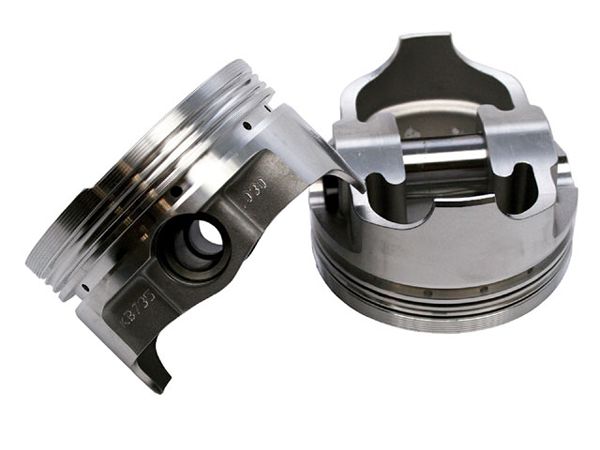
We turned to the professionals at Keith Black for a set of high-quality forged-aluminum pistons for the buildup. Keith Black pistons have a legendary reputation for quality and performance. We ordered ours 0.030 over stock to achieve our desired 383ci displacement. We like Keith Black pistons for a variety of reasons, one of which includes a fully machined step dish "quench" design, which helps maintain a more complete combustion closer to the spark plug. When the piston is compressing the fuel/air mixture, as the piston nears the head, the flat areas on the head and piston come together and force the mixture from those areas into the chamber where the spark plug and burning mixture reside, so you achieve a more complete burn. The quench area also runs cooler than the rest of the chamber/piston. These lower temperatures are where the word "quench" comes from.
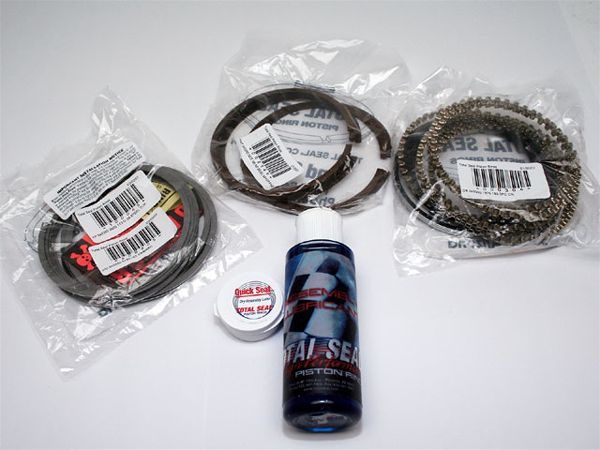
Total Seal hooked us up with a set of rings that will stand up to serious punishment. To figure out what ring set we needed, we simply called Total Seal and spoke to one of their helpful sales techs. We explained the nature of our buildup and included the fact that we bored our block 0.030 over stock and that we intended to run a 100hp shot of nitrous. Just like that, the correct set of gapless rings for our application was on the way. We couldn't see how this could have been any easier.



